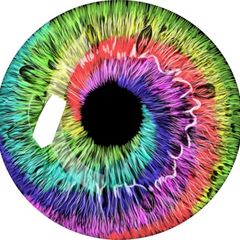[Author : Admin | Date : 12, April 2023 | Reading time : 6 min]
Color blindness in children is like a secret code that only they can decipher. They might try to hide it, not wanting to be different from their peers. But the truth is, being colorblind can be a real challenge when it comes to everyday tasks like reading from a chalkboard or identifying different shades.
If you're worried about your child's color vision, don't be afraid to have them checked out. It's important to catch any potential issues early on so that they can be addressed and accommodated for.
Perhaps your little one has a family history of color blindness or is struggling to learn their colors - this is all the more reason to have their eyes examined. Don't wait for the problem to worsen before taking action. So, Let’s take a test for color blindness. And don't forget, schools can also provide vision screenings for their students. So whether at home or in the classroom, let's ensure that every child has the ability to see the world in all its colorful glory.
Are you worried that your child might be struggling with color blindness? Don't worry, we've got you covered!
Spotting the Early Symptoms of Colour Vision Deficiency in Children
The main symptoms of colour blindness in children are difficulty in distinguishing colours and making mistakes when identifying colours.
However, many colour blind children can learn to identify colours correctly even if they don’t see them in the same way as people with normal colour vision do.
For example, children quickly learn that a fire engine is ‘red’ and when they see other items which look the same colour as a fire engine they will identify that as ‘red’ too. Don’t be taken in by this!
If you think your child might be colour blind the main clues to look out for are:-
using the wrong colours when drawing/painting an object – e.g. purple leaves on trees, green faces
low attention span when colouring in worksheets
denial of colour issues
problems in identifying red or green colour pencils or any colour pencil with red or green in its composition. (e.g. distinguishing purple from blue, pink from grey, red from brown etc.)
identification of colours may be made worse by low level lights, working with small areas of colour and colours of the same hue, conversely they may find colours are easier to distinguish between in good natural daylight
smelling food before eating
sensitivity to bright lights and some colour combinations
reading issues with coloured pages or worksheets produced with colour on colour
children may complain that their eyes or head hurt, if looking at something red on a green background, or vice versa
good at ‘seeing through’ camouflage
Colour blind children may be reluctant to colour in pictures or want to play counting, sorting or other games with coloured blocks, beads, dice etc. or they may love to do all of these activities but sometimes appear confused when taking part.
Easter egg hunts can be quite a challenge for colour blind children because the colour of the eggs can ‘disappear’ against background colours!
If you think your child might be colour blind don’t waste any time finding out if they are. You should immediately be suspicious if there are any colour blind men on the mother’s side of the family – these could be uncles, great uncles, cousins and grandfathers.
By age 5 children with normal colour vision will be able to identify all of the groups of colours in a couple of seconds.
To give yourself a basic indication of whether there might be a problem with your child’s colour vision, get a sheet of white paper and a basic set of colouring pencils – at least 12 different colours but including green, red, brown, orange, blue, purple and grey.
Use mid-range shades, not too pale or too dark– and shade an area of about 2cm by 2cm of each colour onto the paper. Make sure that the colours are in a random order and you don’t have all the reds or greens together, but do place red, green and brown adjacent to each other.
Take the paper and your child to an area with good natural light (but not bright light, artificial light or strong sunlight) and make up a fun game which involves asking your child to identify all of the colours on the sheet.
Do not show them each colour individually, they must be able to see all of the colours at the same time. If your child shows signs that they are not sure whether a colour is red, green, brown, purple, blue or grey, there is a reasonable chance that they are red/green colour blind.
Before you start ask them which colours are the easiest for them to identify. You should expect a red/green colour blind child to be able to identify bright blue and yellow (they can identify these colours by brightness and shade).
Make sure you include these colours so that they do not get the impression that they aren’t clever enough for the game.
Praise your child for identifying colours correctly
Make sure your child knows there are no right and wrong answers
Ensure that there are no other people around, especially siblings.
If you are suspicious that your child might be colour blind, whatever you do, DO NOT follow up this exercise by questioning them about colours of items around the house. If you do this they may clam up and this can affect their confidence.
This method is not a formal diagnosis and you should always check with an optometrist for confirmation as it is really important for colour blind children to be formally diagnosed so that they can access proper support at school.
If your child is diagnosed don’t forget to tell the school, in writing, and ask for the information to be retained on their school record under the SEN category (SPecial Educational Need). Another Way of Colors Blind Test in kids
Step 1:Choose a time of day when your child will be attentive and able to focus on the exam for up to 5 minutes without distractions.
Step 2:Place the youngster in a comfortable position with a clear view of the computer screen (or tablet or phone). They should be staring at the screen straight on, not at an angle. The incorrect view may have an impact on the test outcomes.
Step 3:Adjust the screen brightness to a good degree of brightness that is not washed away by sunlight or another room's lighting. A dimly lit room is perfect. If you have a mobile device, set the brightness of the screen to medium or high by hand. If your child is too young to control the mouse on their own, the adult should "drive," with the child's duty being to describe what they see.
Step 4:We recommend using the "symbol" mode for younger children who do not yet know the numbers. This mode displays one of three symbols: square, circle, or triangle. For the older child, you can use images of animals, fruits, food, and so on.
Symptoms of color blindness are generally noticed when children begin to learn the different names of colors. Many symptoms include: Confusion of certain colors or shades of colors. Seeing green and red as gray/brown.
What Teachers Should Know?
Color blindness is caused by problems in the color-detecting nerve cells located in the back of the eye, called cones. As a result, some people have trouble telling the difference between red and green (the most common kind of color blindness), and between blue and yellow.
Achromatopsia is a rare a form of color blindness in which people can't see any colors — they only see shades of gray.
Parents or teachers may suspect color blindness if a child seems to have trouble seeing certain colors. Kids and teens who are color blind have normal vision — they just don't see certain colors the way others do.
A simple test can help identify color blindness. Many people with color blindness don’t even know it.
People who are color blind see normally in other ways and can do normal things, such as drive. They just learn to respond to the way traffic signals light up, knowing that the red light is generally on top and green is on the bottom.
Some people can use special contact lenses and glasses to help them see some color differences, but there is no cure for color blindness.
Students who are color blind may:
not be able to tell the difference between certain colors or shades of similar colors
have trouble with assignments or projects that require them to use color
need more light in the classroom and seating accommodations
feel self-conscious or frustrated about not being able to see colors
be teased or bullied because of color blindness
Getting to know and understand what color blind students can and cannot see — from parents or guardians, other teachers, and the student themselves — will help you understand and meet their needs much better.
Color blind students may be eligible for a 504 plan, which can provide extra support.
Ways to help a student with color blindness include:
writing in black on a whiteboard instead of using colors (or using white chalk on the blackboard instead of colored chalk)
making copies of handouts with a high black/white contrast, and not on colored paper
using patterns and/or labels in addition to colors
writing out the names of colors if they are relevant to instruction (yellow sun, green frog, etc.)
making sure art supplies or other supplies with colors are appropriately labeled
Sharing is caring! Share this post with your loved ones on WhatsApp, Facebook, and other social media platforms to help them stay informed. 

